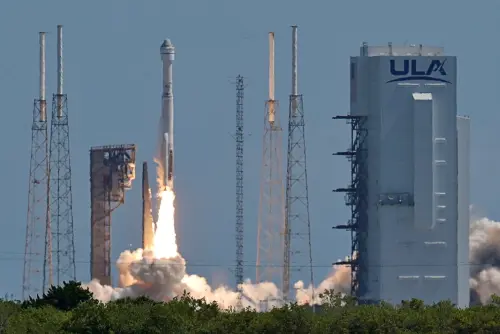Boeing's Starliner capsule, which previously left two NASA astronauts on the International Space Station, may require a third uncrewed test flight before carrying astronauts again, according to agency officials. This situation arises as the spacecraft's first crew had to return to Earth via a SpaceX capsule due to ongoing issues with Starliner's propulsion system, which had extended their eight-day test mission into a nine-month stay in space.
The technical difficulties encountered during Starliner's debut crewed mission represent a significant setback in Boeing's development of a spacecraft that has cost the company over $2 billion. Starliner is intended to compete with SpaceX's Crew Dragon capsule, providing NASA with a second U.S. transportation option to low-Earth orbit.
Prior to obtaining NASA certification for regular flights, Starliner might need an additional uncrewed test mission, which would mark its fourth flight overall, following two successful uncrewed tests.
Steve Stich, head of NASA's Commercial Crew Program, noted the agency is considering options for an uncrewed flight. He emphasized the desire to complete one more test mission before transitioning to crew rotation flights.
Stich indicated that Starliner's crewed flight last year achieved several key testing milestones related to astronaut operations. An additional uncrewed test would be aimed at confirming that the thrusters function correctly in space, a condition challenging to replicate on Earth.
Originally, Starliner's crewed mission was to serve as the final test before starting routine astronaut flights for NASA, which currently relies on SpaceX's Crew Dragon craft.
Boeing is also exploring opportunities for Starliner to transport astronauts to and from privately built space stations under development, a potential revenue stream similar to SpaceX's fully private Dragon missions.
However, Starliner's prospects were jeopardized by five thruster failures during its previous flight, coupled with helium leaks that pressure the thrusters. As a result, NASA deemed it too risky for astronauts to fly on Starliner in September.
A NASA safety advisory panel stated in January that both the agency and Boeing have made "significant progress" in post-flight technical investigations, although propulsion system issues remain unresolved.
Boeing plans to conduct a ground test this summer focusing on propulsion system components to validate the company's proposed fixes.
In total, Boeing has spent over $2 billion on the Starliner program since 2016. The initial fixed-price $4.2 billion NASA contract for Starliner has increased by $326 million since its award in 2014. Boeing has received approximately $2.2 billion so far during development.
In contrast, SpaceX's Crew Dragon has successfully completed 11 astronaut missions for NASA, including a crewed test flight in 2020. The total value of SpaceX's initial $3 billion NASA contract, awarded in 2014, has expanded to nearly $5 billion, largely due to additional missions added amid Starliner's delays.
